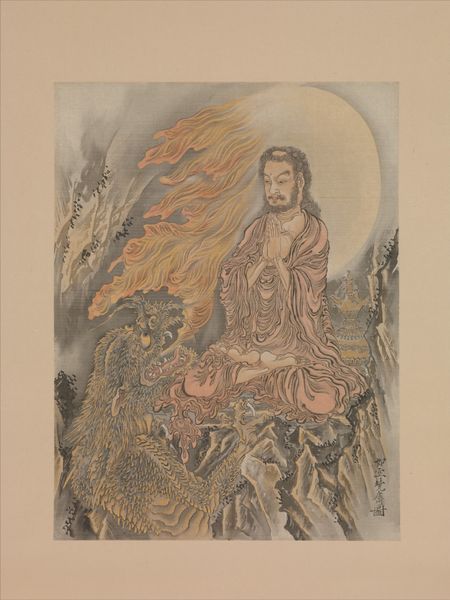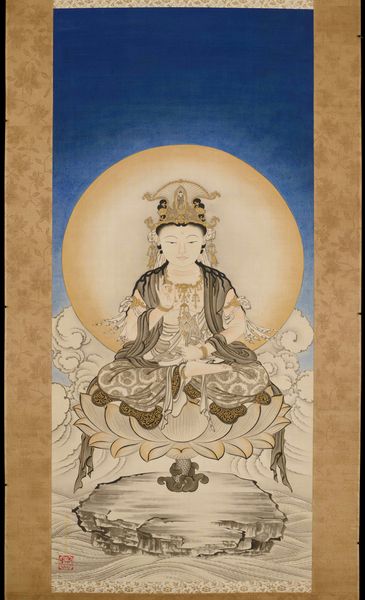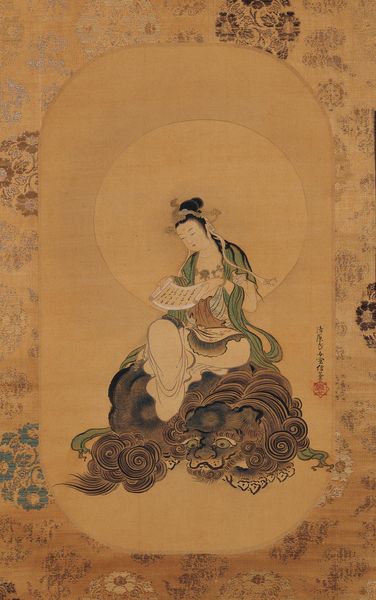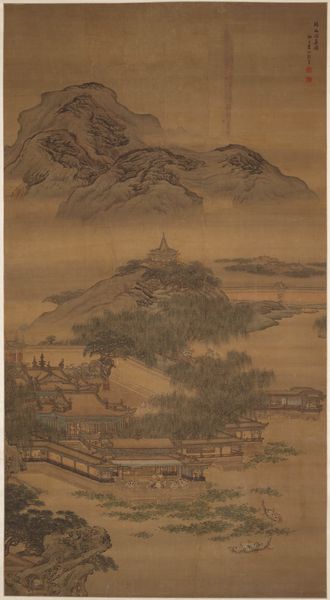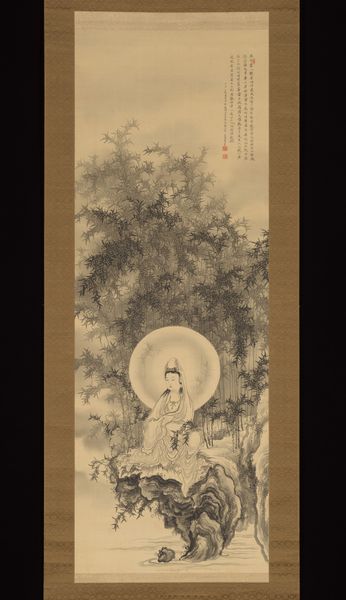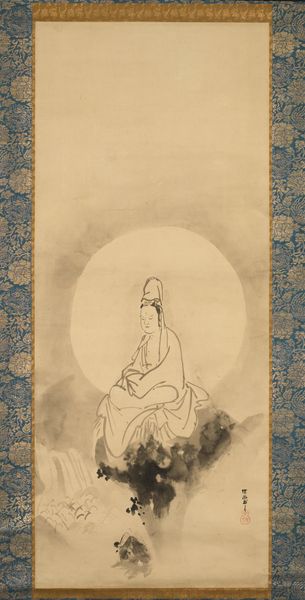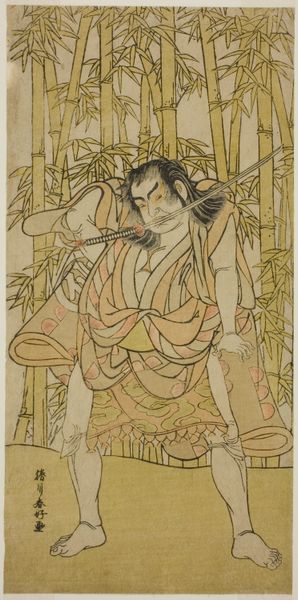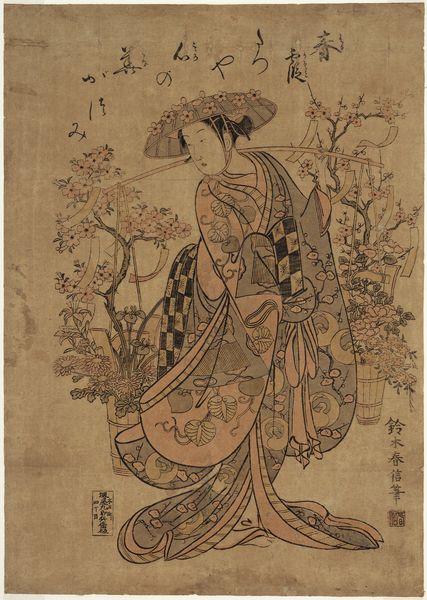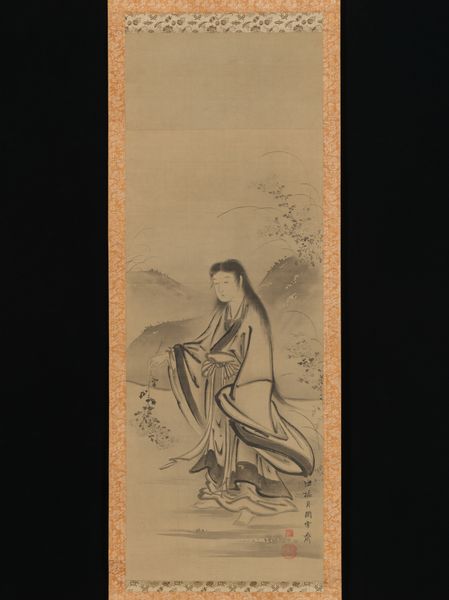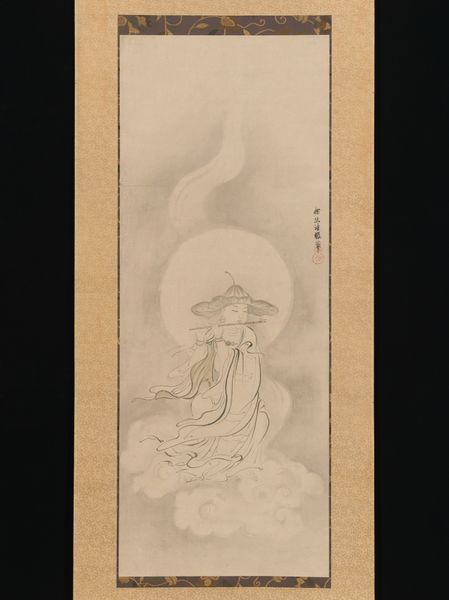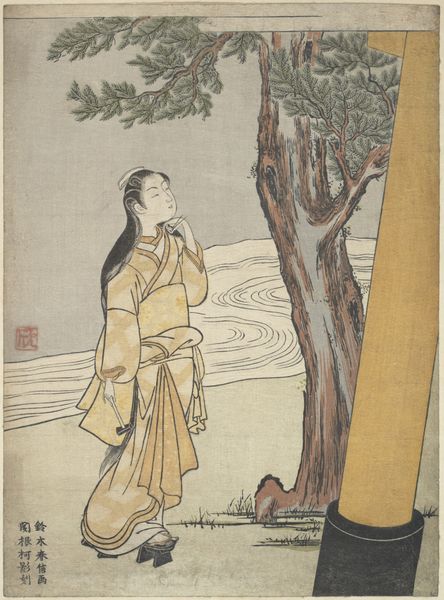
painting, ink
#
portrait
#
ink drawing
#
ink painting
#
painting
#
asian-art
#
landscape
#
japan
#
ink
#
24_meiji-period-1868-1912
Dimensions: 14 3/8 x 11 in. (36.5 x 27.9 cm)
Copyright: Public Domain
Curator: Looking at this ink painting by Kawanabe Kyosai, done sometime between 1877 and 1897, I'm struck by its stillness. There’s an almost melancholic quietness in the grayscale. Editor: Indeed. The monochromatic palette really accentuates the interplay between light and shadow. Observe how Kyosai uses varied ink washes to define form and create depth, a technique that speaks volumes about his mastery. Curator: Absolutely, but it’s more than just technical skill, isn't it? The figure of White-Robed Kannon sits centrally, yes, framed by that elegant weeping willow, but the symbolism resonates profoundly with me. Kannon, embodying compassion, offers solace in a rapidly modernizing Meiji-era Japan grappling with its identity. Her presence, so serene amidst social upheaval, must have provided comfort. Editor: I agree that cultural context is helpful. Yet focusing on just her formal aspects, one sees the dynamism within that supposed serenity. Note the intricate detailing in her robes versus the comparatively loose rendering of the landscape. This deliberate contrast directs our gaze and perhaps even mirrors a spiritual focus over worldly concerns. Curator: Yes! And the inclusion of details such as the subtle rendering of fish beneath Kannon really reinforces her connection with not just humanity, but the natural world more broadly. This speaks volumes, echoing Buddhist beliefs in interconnectedness and offering viewers pathways toward environmental and social justice. Editor: Fair point, yet even these considerations stem from choices within the compositional structure itself. Those swirling ink lines defining water, juxtaposed against the sharp angles of the rocks. And it is these contrasts that amplify its narrative— whether secular or sacred. Curator: The enduring appeal lies in the merging of all of these facets. The technique and cultural relevancy allow Kannon's essence, a beacon of hope, to speak to viewers across time. Editor: Indeed. It's a superb example of how formalism can enrich rather than detract from deeper interpretations. The very visual language opens doors to understanding history itself.
Comments
No comments
Be the first to comment and join the conversation on the ultimate creative platform.
